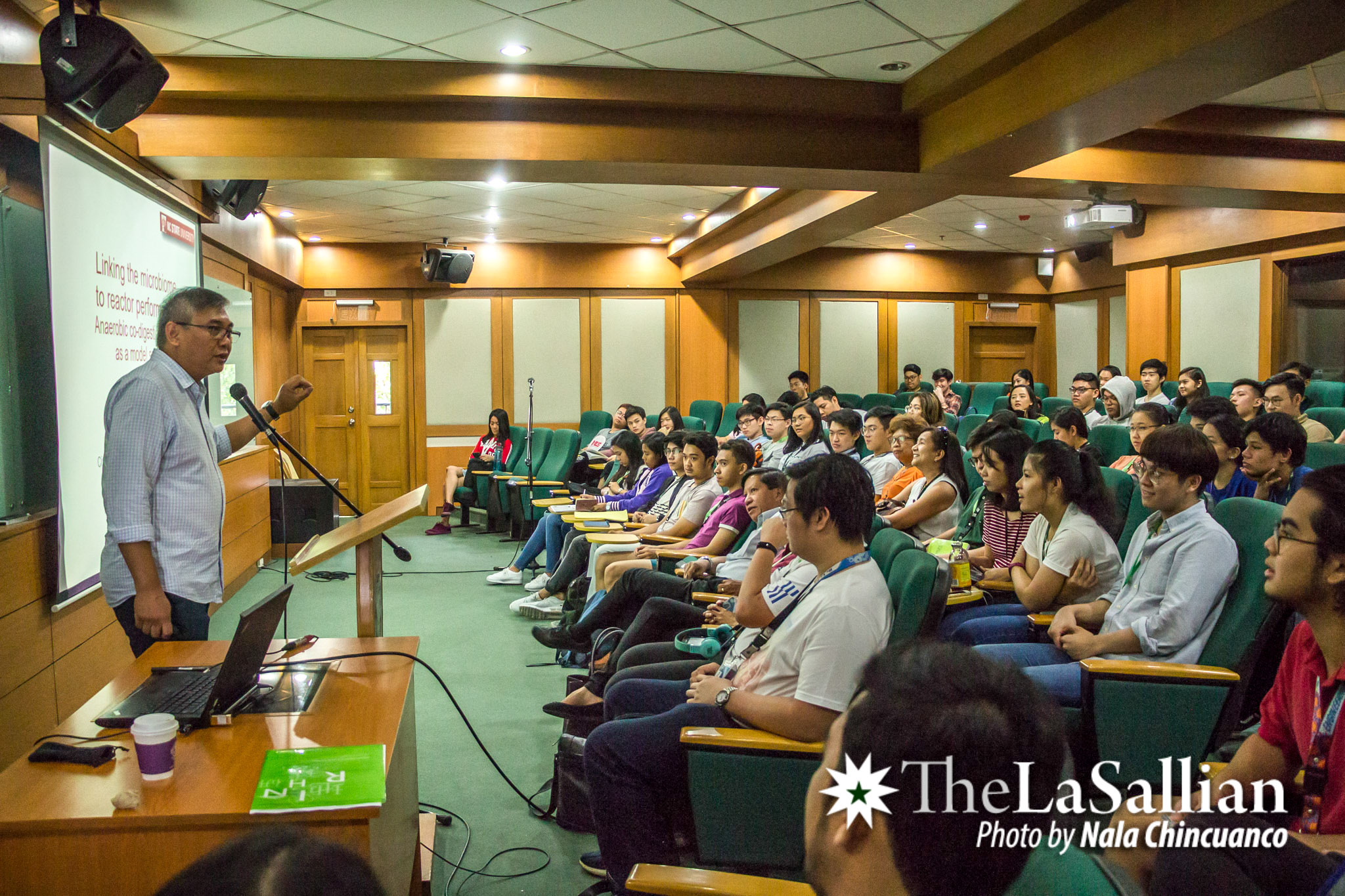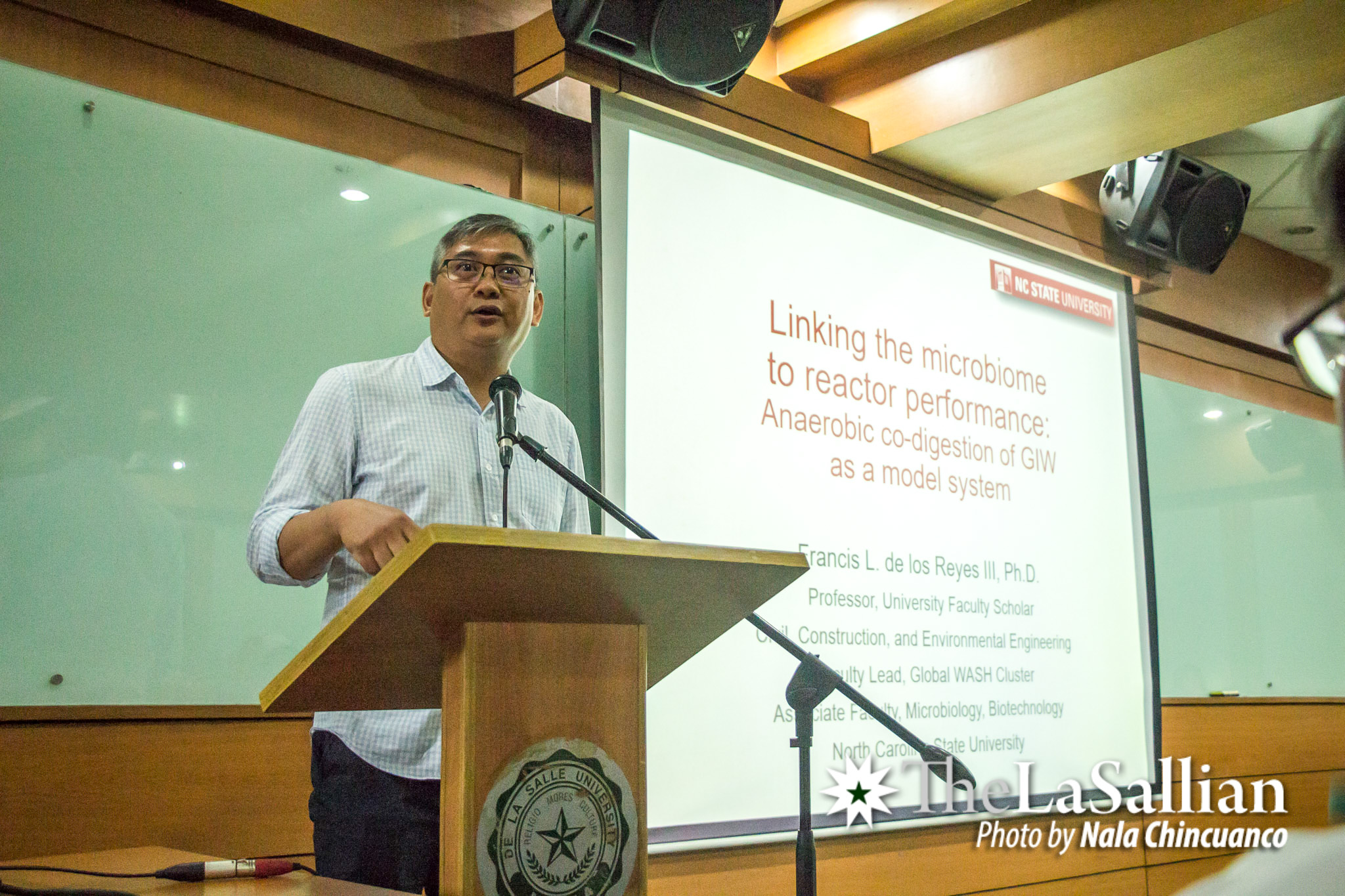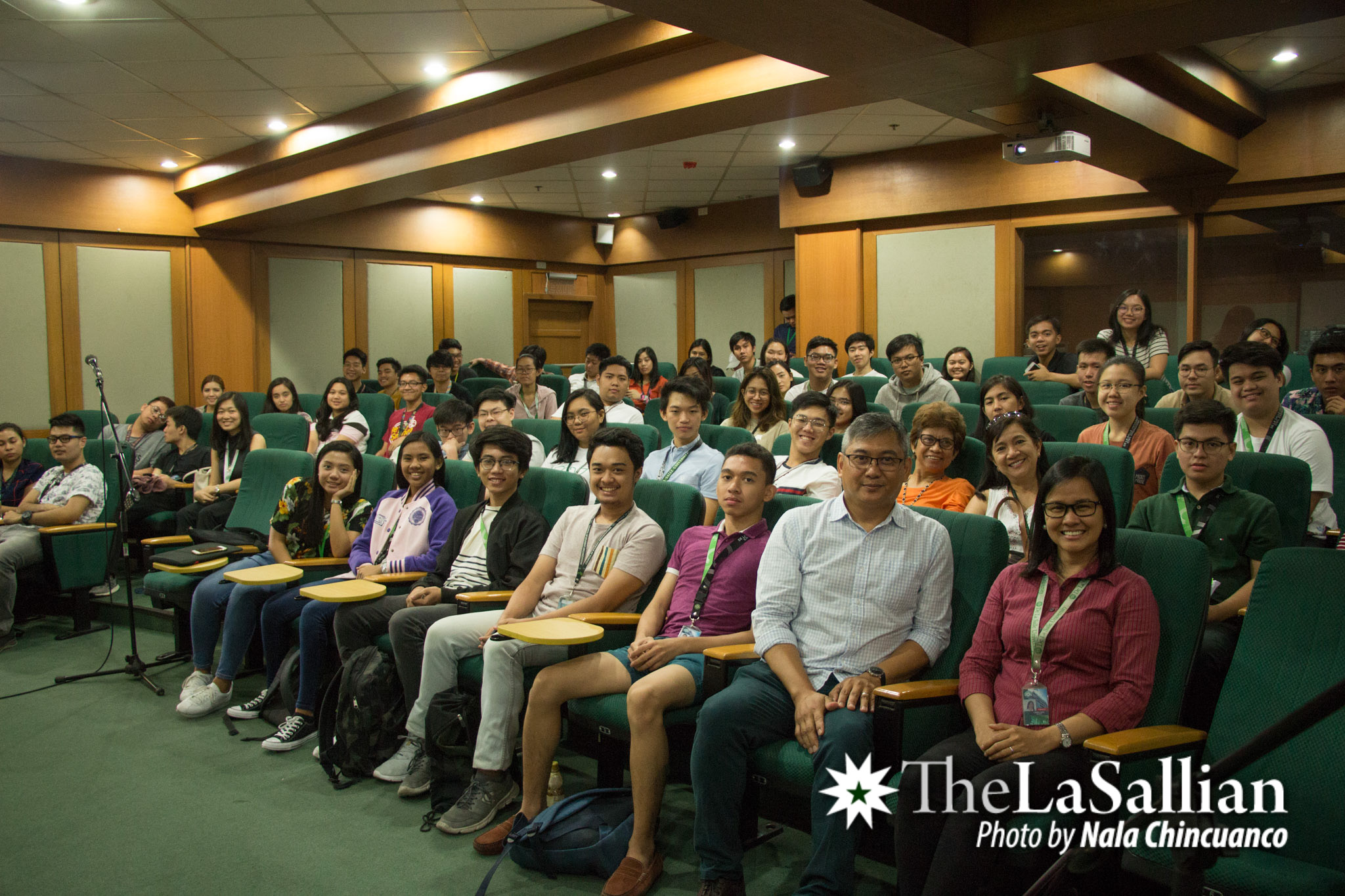Last July 9, a talk titled, Linking the Microbiome to Reactor Performance: Anaerobic Co-Digestion of Grease Interceptor Waste as a Model System by Dr. Francis de los Reyes III, a professor from the North Carolina State University, was conducted at the Shell Companies in the Philippines Audio Visual Room of Velasco Hall.
Spearheaded by the Center for Engineering and Sustainable Development Research, the talk focused on the utilization of a series of experiments to increase methane yields from the wastewater found in sewers.

At the interfaces of engineering
Being immersed in Agriculture in his undergraduate days, Civil Engineering in graduate school, and Environmental Engineering for his doctorate degree, de los Reyes has had his fair share of experience in the different frontiers of Engineering.
His career has long been associated with the study of human waste and how it is transported to water treatment facilities. Being a member of the Water Environment Federation and the International Water Association, and as the Associate Editor of Water Research and American Society Of Civil Engineers Journal of Environmental Engineering, de los Reyes is part of the team that designs and engineers water treatment plants to protect unwanted chemicals from flowing into bodies of water and prevent contamination.

Using state of the art molecular methodologies, de los Reyes mentioned in the talk employing deoxyribonucleic acid (DNA) and Ribonucleic acid (RNA) based techniques to observe, analyze, and eventually optimize microbial populations in biological reactors. These methods take into consideration the food and oil waste found in wastewater, external factors—wastewater composition, reactor type, and hydrodynamics—and the various micro-activities that occur in different microbial communities and micro-structures found within the reactor, which are then deconstructed and reviewed in a causative perspective.
He then scrutinized the current methodologies for environmental microbiology, specifically the limitations of the Henle-Koch postulates—a set of principles for validating a causative relationship between a microorganism and a disease—which, due to the higher microbial diversity in complex environments, cause less experimental control in field sites.
From waste to energy
de los Reyes’ research on anaerobic co-digestion of grease interceptor waste, which is the process where microorganisms decompose biodegradable material in the absence of oxygen, has led him to become one of the leading scientists at the forefront of Environmental Engineering. The main objective of the research is to be able to employ a sequence of experiments, namely the common garden experiment, an experiment wherein plants of different classifications are placed in a common environment; reactor stress studies, which is utilized in monitoring the health of the reactor; and long-term monitoring of the anaerobic microbial populations.

The acquired data is then utilized to determine the different factors that could influence the correlation of bacteria in an isolated environment with high methane yields in co-digesters, where waste materials are broken down by bacteria. This enables the production and accumulation of methane, which is documented as the second most abundant greenhouse gas after carbon dioxide, which will lessen high methane emissions in treatment plants. The collected methane will then be utilized as fuel, a vital component of natural gas, to effectively convert it to a high-value end product instead of being unusable and a significant contributor to high methane emissions in water treatment plants.
The methodology he implemented to achieve this is based on system stability through the use of resilience and resistance tests to influence microbiomes, where microbiomes would be stored in different reactors and varying microbial communities are introduced to each one. Afterward, the effects caused by the interspecies interactions in the aforementioned tests are documented and used as a basis for understanding the different linkages between the different types of microorganisms that were introduced and how they influence the methane yields in bioreactors.
